Some gardeners revel in the shifting seasons: celebrating the changes in scenery, welcoming the visual rest that winter brings, and relishing its contrast to the exuberance of summer. But for others, this roller-coaster ride is stressful, and they find winter not restful but depressing.
They wish for a garden they can enjoy all season long, without the extreme ups and downs. Such is the garden that Alan Collachicco and William Towne created in Byfield, Massachusetts. With a strong underlying structure, small planting beds that fade away in winter, and a subtle but unified color scheme, they’ve created a garden that changes only slightly throughout the year without sacrificing the joys that gardening can bring. Come winter, instead of lamenting a sleeping garden, they can now enjoy a fourth—just as satisfying—season.
Strong forms last throughout the seasons
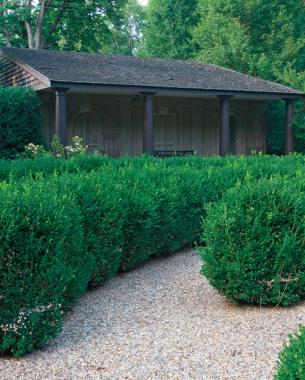
Photo/Illustration: Michelle Gervais
When Alan and Bill moved to their historic house 14 years ago, the property was a blank slate. They felt it was important to create a garden that reflected the history of the house, parts of which date back to the 17th century. Evoking a sense of gravitas was key to creating a garden that felt like it had always been there. The most important step was to create some solid bones. Alan and Bill planned a large central maze of evergreen ‘Green Mountain’ boxwood ( Buxus ‘Green Mountain’, USDA Hardiness Zones 6–9) and an extensive network of stone walls and flagstone and pea-gravel paths.
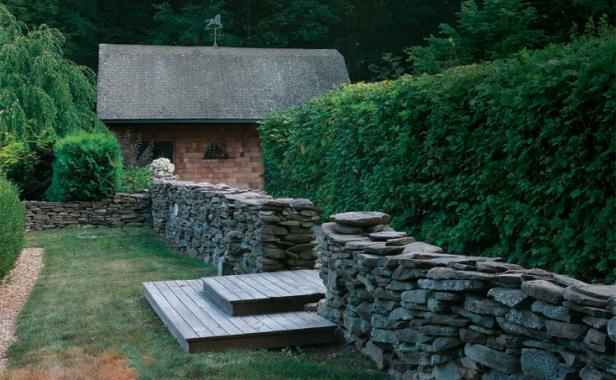
Small subtle beds are less jarring when barren in winter

Photo/Illustration: Michelle Gervais
Grand herbaceous borders would have required too much maintenance for Alan and Bill’s taste and lifestyle and, come winter, would have become large expanses of barren earth. They chose, instead, to highlight the hardscaping and brighten the dark corners with small beds tucked against walls and walkways. These small beds, when bare in winter, recede into the background, which lets the stonework around them stand out.


In the warmer months, the beds are filled with tapestries of subdued plants, like hostas ( Hosta spp. and cvs., Zones 3–9), European ginger ( Asarum europaeum , Zones 4–8), ferns, and astilbes ( Astilbe spp. and cvs., Zones 3–8). You won’t find many shrubs in these small beds. If any tree or shrubs are present, they are specimens that become focal points as the season winds down, with their eye-catching forms or decorative bark.
Tip: Prune for Maximum Effect
the eye is drawn to the bark, not the branches.
Paint bridges the seasonal color gap
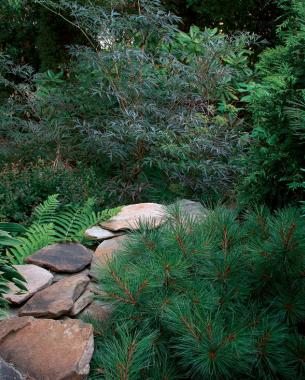
Photo/Illustration: Michelle Gervais
No matter how many evergreens are added to a garden, winter can be a bit gloomy in shades of muted green, gray, and beige. Alan and Bill discovered that a few dashes of paint go a long way toward brightening things up and highlighting some of the exceptional hardscape and ornaments they display. The key was to find a paint color that reads as subtle yet complex and that stands out in winter but isn’t overpowering. They settled on Benjamin Moore’s Black Bean Soup, a dusky purple-brown that seems to shift and change with the seasons and the time of day. It provides a neutral background for plants in the growing season and takes the place of flowers in winter. The color shows up throughout the garden—from the columns on the rear of the garage to the large classic urns in the back of the garden. Alan and Bill expand on this color theme in the warmer months with the use of similarly hued foliage plants. The result is a garden that’s connected from back to front, left to right, January to December.
year-round garden, Alan responds, “If the bones are good, the garden is
good.” The bones of this timeless garden are, indeed, exceptional, and
in turn, this formal yet casual garden is just as satisfying in February
as it is in July.
Fine Gardening Recommended Products

A.M. Leonard Deluxe Soil Knife & Leather Sheath Combo
Fine Gardening receives a commission for items purchased through links on this site, including Amazon Associates and other affiliate advertising programs.


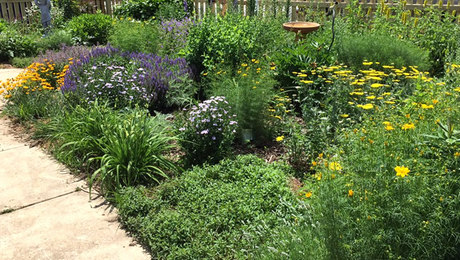
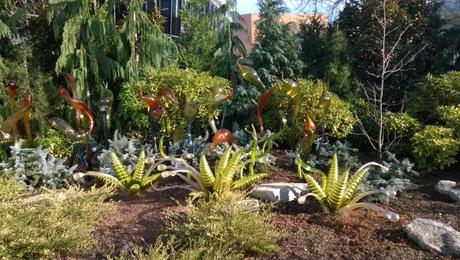
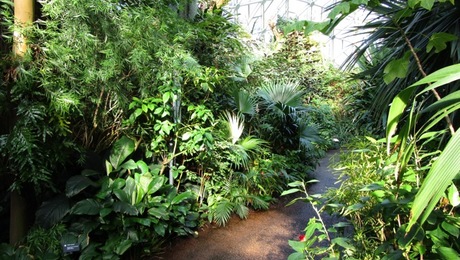













Comments
Log in or create an account to post a comment.
Sign up Log in